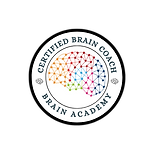The Impact of your Environment on Recovery
- Luke Bohnenberger
- Apr 29
- 3 min read
Today I want to dive into something that is a total game-changer for brain growth and brain injury recovery, the environment you live in. When you think about recovery or personal growth, you probably think about exercises, therapy or routines, but the space and stimulation around you? That might just be the most important part of your recovery. Let’s break this down into real talk because not all environments are created equal.
1. Impoverished Environment: The "Dry Tree" Effect
Imagine a tree that's barely hanging on. No water, no sunlight and no nutrients. It looks tired, dry and lifeless and guess what? That’s what an impoverished environment does to your brain. This happens when there's not enough stimulation mentally, emotionally or physically. It can happen at any age. Kids get bored in school. Adults get "bore-out" at work when tasks are repetitive and unchallenging. Brain injury survivors? They feel stuck, unmotivated and uninspired when there's no new input around them.
A little boredom here and there isn't bad. Actually, it can spark creativity, but long-term boredom without growth opportunities.... well it actually shrinks the brain’s potential.
2. Enriched Environment: The "Goldilocks Zone"
This is the sweet spot. An enriched environment gives your brain just enough stimulation to grow without overwhelming it. It’s about balance. Too little stimulation and your brain starves. Too much and you get stressed out. The goal is to create a space that encourages learning, curiosity, creativity and physical movement.
Here’s the formula I live by:
ABL = Always Be Learning
Exercise your body and mind.
Surround yourself with things and people that challenge you just enough.
Have conversations about passions, dreams, new ideas—not just small talk.
When survivors are recovering from a brain injury an enriched environment becomes even more critical. The brain needs varied, supportive, stimulating experiences to rebuild neural pathways. This is why therapy, engaging hobbies, social connections and even new experiences matter so much. The brain is always learning. Help it learn the right things.
3. Toxic Environment: The Brain’s Worst Enemy
This is the danger zone. A toxic environment is packed with stress, negativity, unhealthy habits and constant overstimulation. When you are exposed to chronic stress your brain produces too much cortisol. Too much cortisol damages neurons and weakens the brain’s ability to adapt and grow. Toxic environments also overstimulate the dopamine pathways leading to things like addiction, social media obsession, FOMO (fear of missing out) and a constant craving for "quick hits" of pleasure.
Scrolling mindlessly on your phone? Feeling worse after checking social media? That's your brain stuck in a dopamine trap. Smartphones, gossip, negative news cycles they are all modern pacifiers that keep your brain from doing the deeper work it needs.
So, what’s the takeaway? Here I broke it down in bullet points.
Boredom can be a tool, but too much turns into a drought.
Enrichment feeds your brain’s growth and fuels recovery after injury.
Toxic environments shrink your potential and flood your brain with the wrong chemicals.
Creating an enriched environment isn’t about being busy 24/7. It’s about intentional living. It’s about filling your space and your mind with things that challenge, inspire, and support you—without overwhelming you.
If you’re a brain injury survivor or just someone trying to build a better life, your environment matters more than you think.
Choose people who lift you up.
Choose activities that stretch you.
Choose moments of stillness and reflection.
Choose growth over comfort.
Your brain is ready to build new pathways. Give it the environment it needs to thrive.









Comments